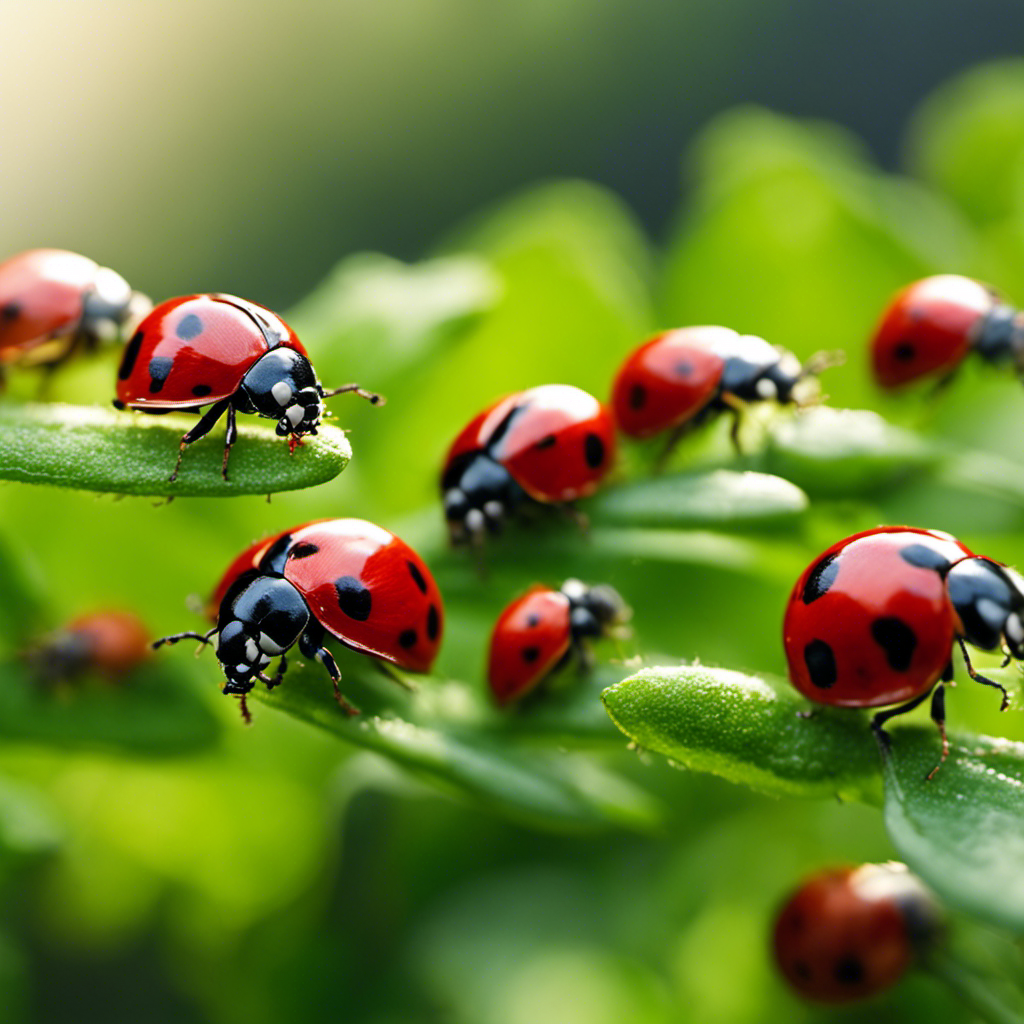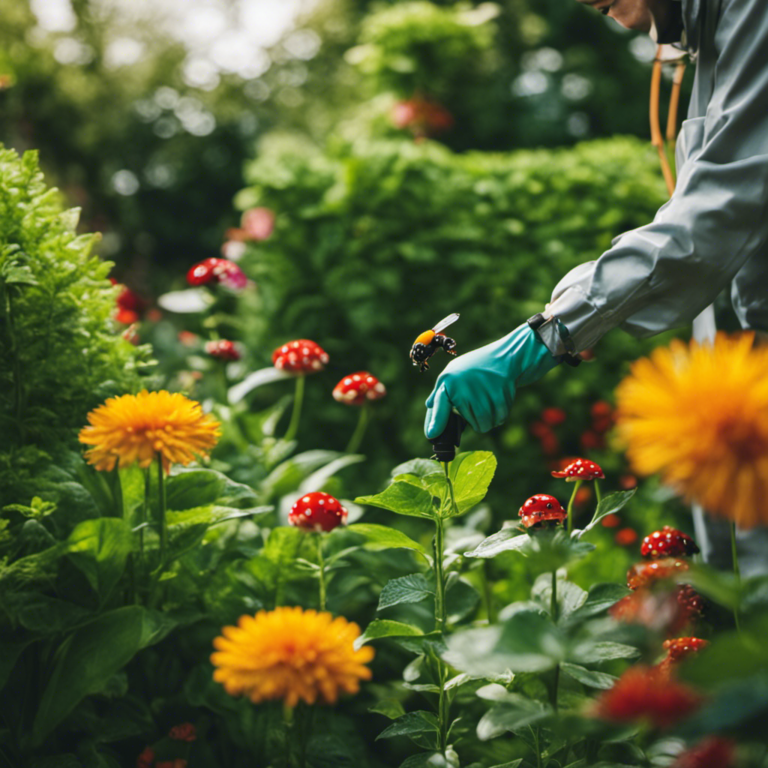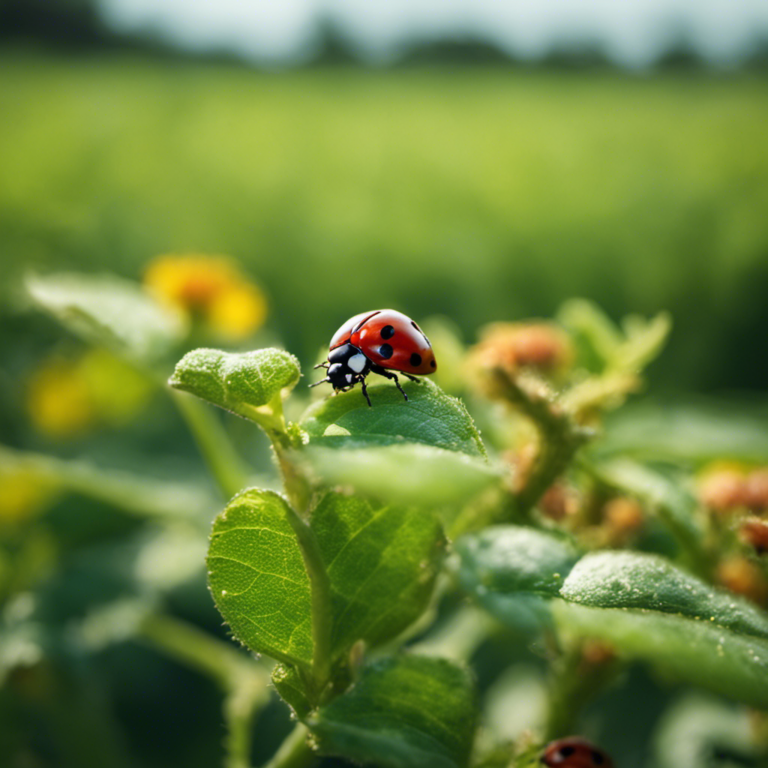Imagine stepping into your garden and being greeted by a thriving community of small green warriors, ready to protect your plants from pesky bugs. These beneficial insects, such as ladybugs and praying mantises, act as nature’s own pest control team. With their assistance, you can establish a balanced ecosystem in your garden, without the need for harmful chemicals.
In this article, we will explore different methods, including companion planting and organic sprays, that will empower you to successfully combat garden pests while creating a flourishing haven free from pesticides.
Key Takeaways
Harnessing the power of nature’s warriors can play an important role in maintaining a healthy garden. Did you know that ladybugs, well-known beneficial insects, can consume up to 5,000 aphids in their lifetime? By attracting these helpful creatures and implementing barrier methods, companion planting, and organic sprays, you can create a balanced ecosystem that keeps harmful bugs away. So, the next time you spot a ladybug in your garden, take a moment to appreciate its hard work in protecting your plants.
Natural Predators
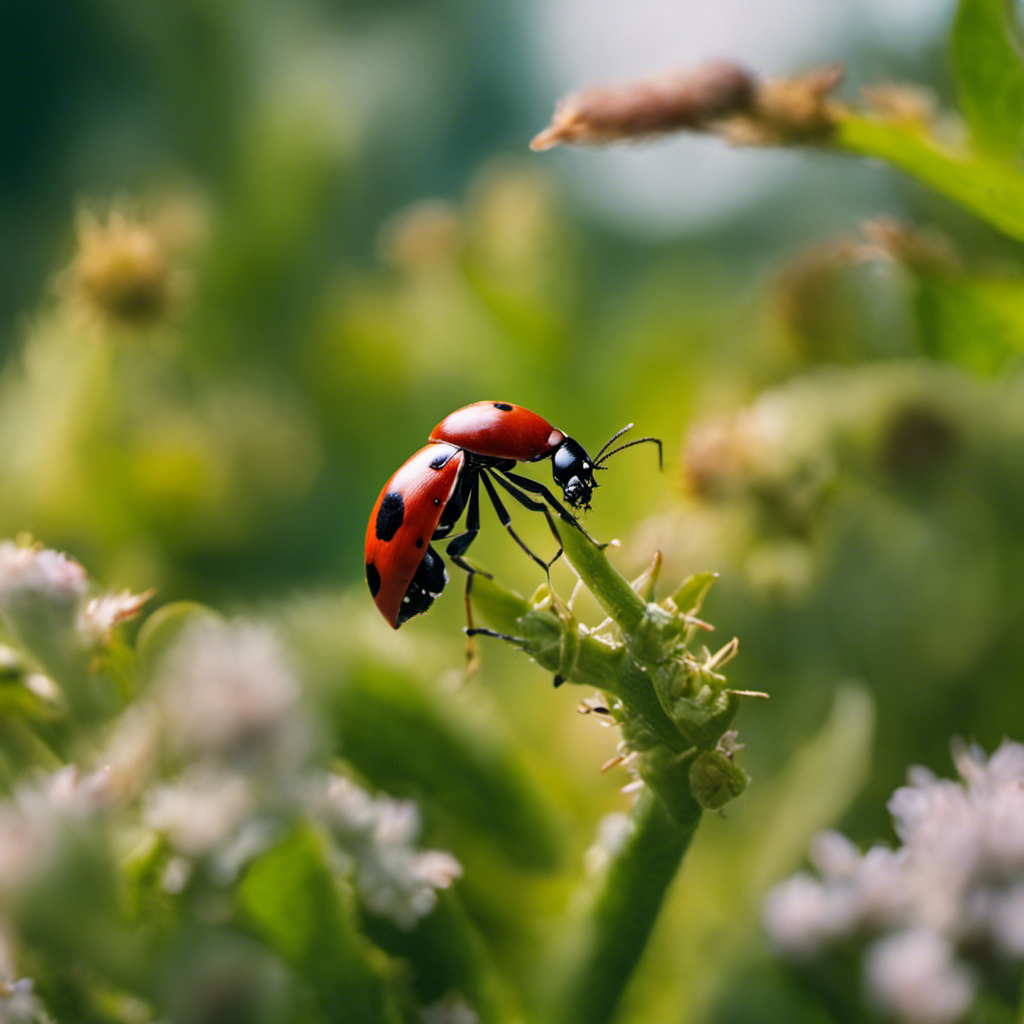
Protect your garden from pesky bugs by harnessing the power of natural predators that hide among the foliage. These helpful creatures play a crucial role in maintaining the delicate balance of predator-prey relationships in your garden ecosystem.
By preying on harmful insects, they serve as a form of biological control, effectively managing the pest population without the need for chemicals. Take ladybugs, for instance, which are voracious aphid eaters and can consume hundreds of these destructive pests in a single day.
Praying mantises, on the other hand, are skilled hunters that target various insects like caterpillars and beetles. Lacewings, in contrast, feed on aphids, mites, and thrips.
Beneficial Insects
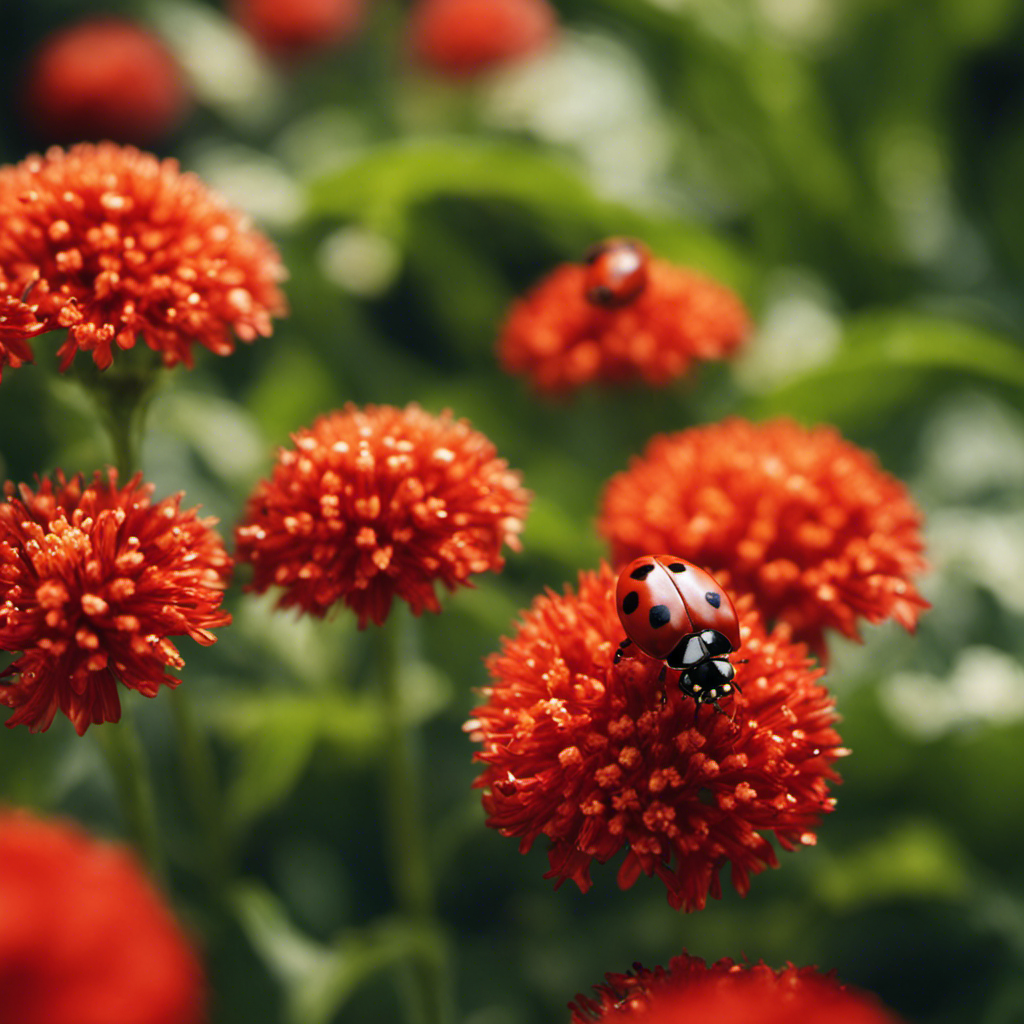
Invite these helpful insects into your garden to continue the battle against pesky bugs and maintain a thriving ecosystem. These garden-friendly insects are nature’s alternative to chemical pest control, providing an effective and sustainable solution for managing unwanted pests. By attracting and supporting these beneficial insects, you can create a balanced and healthy garden ecosystem.
To understand the role of these helpful insects, here is a table showcasing some common garden-friendly insects and the pests they prey upon:
| Beneficial Insect | Preyed Pests |
|---|---|
| Ladybugs | Aphids, scale insects, mealybugs |
| Lacewings | Aphids, mites, whiteflies |
| Praying mantis | Caterpillars, beetles, grasshoppers |
Barrier Methods

Protect your garden from pests with barrier methods.
Mulching and physical barriers can effectively keep unwanted insects and pests out of your garden. Mulching involves covering the soil with organic materials like wood chips or straw, creating a barrier that prevents pests from reaching the plants’ roots. This also creates an environment that’s less appealing to pests.
You can also use physical barriers like fences, nets, or row covers to physically block pests from entering your garden. These barriers can be made of wire mesh or plastic and should be properly installed for maximum effectiveness.
Companion Planting
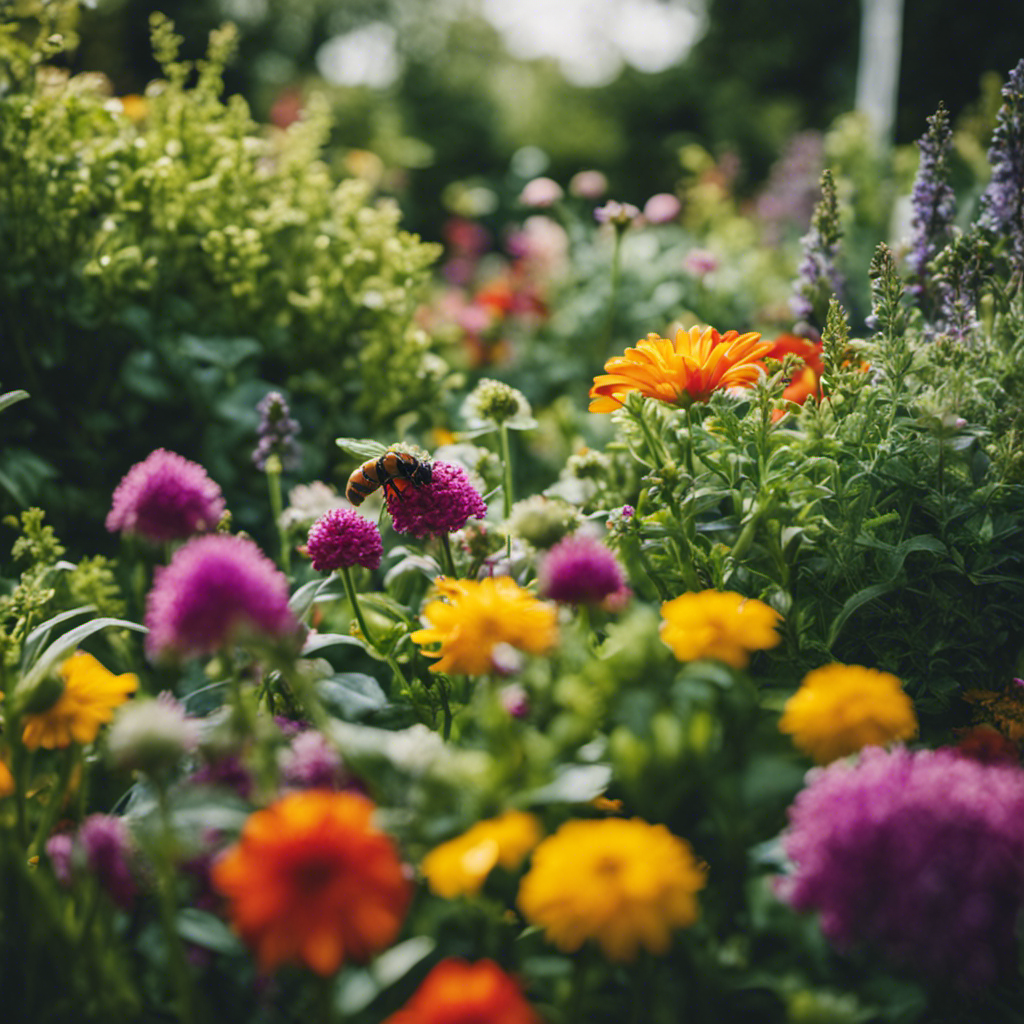
Enhancing Your Garden with Companion Planting
One effective way to improve your garden’s ability to fight pests is through companion planting. This gardening practice involves planting different species of plants together to create beneficial relationships. By strategically selecting plants that support and protect each other, you can create plant guilds that work together to deter pests and improve overall garden health.
Companion planting takes advantage of the natural properties of certain plants to repel or attract insects. For example, planting marigolds near your vegetables can help repel harmful pests like aphids and nematodes. Similarly, planting herbs such as basil or dill alongside your tomatoes can attract beneficial insects like ladybugs and lacewings, which feed on tomato pests.
In addition to pest control, companion planting can also improve soil health and nutrient availability. Some plants, like legumes, have the ability to fix nitrogen in the soil, benefiting neighboring plants. Other plants, such as sunflowers, have deep roots that help improve soil structure and water retention.
Organic Sprays
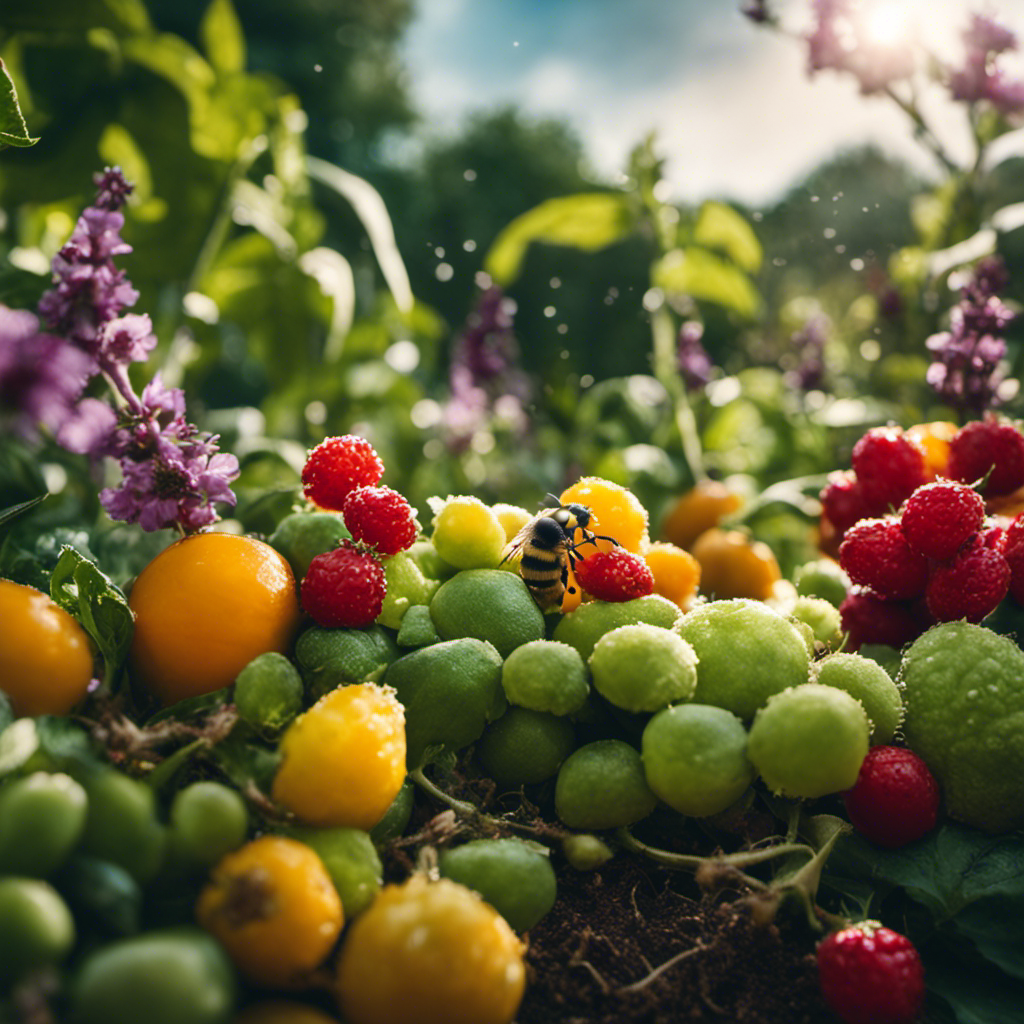
Spraying organic solutions on your plants is a natural way to combat pests in your garden. Using organic sprays is effective and environmentally friendly, as it avoids the use of harmful chemicals.
You can easily make your own organic sprays using DIY recipes and customize them to target specific pests. For instance, a simple mixture of water, dish soap, and garlic can deter aphids and caterpillars. Another popular organic spray is neem oil, which is derived from the neem tree and can control a wide range of pests.
Unlike synthetic pesticides, organic sprays have minimal environmental impact. They break down quickly and don’t persist in the environment, reducing the risk of contaminating soil and water sources.
Conclusion
Harnessing the power of nature’s warriors can play a crucial role in maintaining a healthy garden.
Did you know that ladybugs, well-known beneficial insects, can consume up to 5,000 aphids in their lifetime?
By attracting these helpful creatures and implementing barrier methods, companion planting, and organic sprays, you can create a balanced ecosystem that keeps harmful bugs away.
So, the next time you spot a ladybug in your garden, take a moment to appreciate its tireless efforts in protecting your plants.
